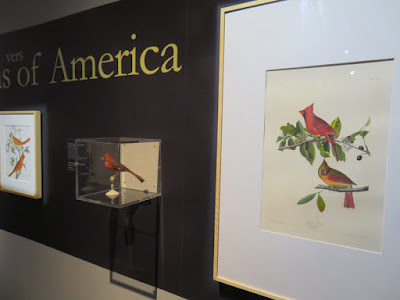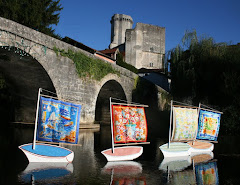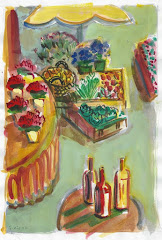Tuesday, March 27, 2018
Eat Your Dandelions
I’m not sure if I have ever told you about our local newspaper, the SudOuest (the Southwest). It’s about 12 pages long, six of those pages are sports stuff. An American friend of mine said she wouldn’t read this rag because its all about fender benders, tragic car wrecks and group photos of every kind of local club you can imagine. French folks wonder that I find any use for the brief, unsophisticated articles. The thing is that I am not reading the SudOuest for “real” news. I read it for a dip into the daily news around me. I find this “rag" a very valuable part of understanding my life here in France.
My favorite section of the paper is the last page. Here I check out the weather forecast for an overall view of the upcoming week and I glance at which saint day it is. The very last things to read are the little boxes with “It’s the moment for….” and “The trick of the day”.
Here are some examples of this charming French life version of “Hints from Heloise”. This particular collection of snippets were helpful in getting us through a long, damp, grey winter:
C’est le moment de…..
“It’s the moment to eat dandelions. Like lots of wild plants, the dandelion is full of great nutrients: fiber, iron, calcium, vitamin A and B9. Gather them when the young centers are tender, because the dandelion gets bitter with age. The more it is big and green, the more fibrous it is.”
Le truc du jour The trick of the day….
“Cook some dandelions. Boil them up and they can replace spinach, or add to a soup. Steam them and serve with potatoes. The young leaves of the dandelion can be eaten raw, in a salad, with croutons, eggs and cheese.”
Le truc du jour……
“Take care of your rubber boots. With time your rubber boots loose their elasticity. Rub down your boots with a rag dipped in glycerine to give them back their suppleness. And especially avoid letting them dry in a hot place, that risks deforming them.”
C’est le moment…..
“It is the moment to adapt your meals. Now that winter has settled in in France, you have longings for cheese raclette, macaroni and cheese, and you pound on the fondu, but do not let yourself give in to cheese for all your meals! Soups are ideal in this season: they reheat the body and, better yet, they keep one hydrated.”
Le truc du jour…..
“A good balanced vegetable soup will contain fast and slow sugars. Marry cooked carrots and navets with leeks and onions. Then add some dried vegetables (lentils, chick peas…) that will stick to the body.”
Le truc du jour…..
“You feel a cold coming on, boil 1 litre of water and add a handful of fresh thyme, a slice of lemon, and a few dried elderberry flowers. Let this infuse for 15 minutes, add sweetness with a bit of honey and drink this herbal tea all day long.”
C’est le moment……
“It’s the moment to eat celery-rave. It is full on season of this vegetable low in calories, but rich in vitamins ( especially in vitamin K). You can eat it raw or cooked. To cook cut the root into fourths and grate before cooking.”
Le truc du jour…..
“Make a crumble with celery-rave. (lemon, 20 cl of creme, half a log of goats cheese, 1 onion, 5 slices of cooked bacon, bread crumbs) Slice the goats cheese and place in a gratin dish, spread the diced onions and bacon on the cheese, then the grated celery-rave sprinkled with a bit of lemon juice. Sprinkle the top with bread crumbs for the crumble. Cook. (there are no cooking directions - of course you know what to do - right?)”
The SudOuest might be considered fluffy, but that is exactly what I like about it. Le Figaro and Le Monde can carry the heavy load of real news. For me, reading the SudOuest is all about absorbing a little Frenchness: how the weather will affect next year’s wine, how did the Crusades change the way villages were constructed, and be sure to eat your dandelions.
Saturday, March 17, 2018
Spring Kids
A wonderful sign of early spring are the baby goats gambling about in the small pastures along our country lanes. Curlicue puff balls springing about on tiny legs, bumping into brother and sister kids. No matter what else might be happening in ones life these bundles of adorableness make one smile. Well, that is for those of us that are causal observers. The arrival of these fragile babies creates some anxiety in those that are responsible for them. Here is a little story told by the best goat cheese maker in the region and the Little Bo Peep of her herd.
Well folks, some of you might be wondering how we are getting on....
Well it's been interesting. Last Saturday was day one with 3 goats producing 5 nice kids. That was a good start if a little startling as we had reckoned Monday was the big day.
Ok so Sunday was quiet and we caught up.
Then the interesting bit. It got seriously cold. Of course I thought to myself, nothing like a freezing wind when your most precious kids are arriving.
We did our best to keep the little ones cosy and our water protected.
The next couple of days was a trudge, lugging water to pigs etc etc. Of course as luck would have it, our tractor was having a much anticipated overhaul, so it couldn't help.
....but no kiddings!
Last night, as we finished our evening chores I asked the goats, very nicely, if they could please just hang on until this morning, after 9, preferably.
Well what lovely goats we have...
10 am, Macy produces twin sisters. 3 more kidded in the afternoon.
I guess they decided in all that cold and ice the kids were better in than out!
Well that or we were jolly lucky.
Monday, March 5, 2018
Audubon
If someone were to say to you bird images, great big paintings of American birds, by an American artist, you would probably say Audubon, John James Audubon. And you would be right except for one thing - he wasn’t American he was French. That news sort of shocked me the first time I heard it as I think of Audubon as an icon of American art and as American as Davey Crockett.
I came across this tidbit of information in a newspaper article a few years ago. Then recently there was more news of Audubon and we took a little drive up to the Natural History Museum in La Rochelle to see an exhibit of the early works of a young Jean Jaques Audubon.
It turns out that Audubon led a chaotic life starting with the fact that he was born to a mistress while his father was living in Haiti establishing sugar plantations. His mother died early on and he and his father left Haiti, went to Pennsylvania, and then to France to live with his father’s wife who had stayed back in France. His father pushed him into military school when he was 12 years old to become a seaman, but it was quickly evident that he got seasick and that he had no aptitude for mathematics or navigation. The young Audubon was thrilled to be back on dry land and in the fields where he could focus on birds. From his earliest days he was obsessed with birds, “I felt an intimacy with them….bordering on frenzy (that) must accompany my steps through life.” He was lucky because the 1800’s was a time of huge discoveries in natural history with funding for exploration and buyers of all things that gave the everyday citizen exposure to these new discoveries.
At 18 his father obtained a false passport for Audubon so that he could avoid conscription during the Napoleonic Wars. He avoided the military, but his calamities continued to follow him. Before he even got off the boat he came down with yellow fever. The captain took him directly to be nursed back to health by a group of Quaker women. This was his introduction to english and he always spoke with stilted, old fashioned words. Launched into American life he dabbled in several different careers and moved around from Pennsylvania, Kentucky and Missouri. Along the way he met and married Lucy Bakewell. They had two surviving sons. Audubon was often on the road, or rivers, in search of new bird species and working to perfect his representations of birds. His talent was quickly recognized, but there was a fair amount of competition in the field and he was perceived as a young upstart. Barley keeping his family afloat he did portraits on the side and Lucy was a teacher - the family seemed to be used to wandering around a lot and scratching things together just enough to stay afloat. Whenever possible Audubon tied his work to his passion for finishing up his main project, a book - The Birds of America. He developed wiring techniques that allowed him to show the birds in a more animated way. He’d redo all the paintings that had been done before he worked out this new technique. He hired hunters to gather specimens for him. He wandered up and down the waterways of the east coast where he could encounter the most diversity of birds. In all the project took 14 years of drawings, wandering, and self promotion of the project. There were not many folks that thought he could get the book into publication.
Audubon’s story continued to be one of the driven, starving artist with highs and lows in his financial life. The things that were never in question were his endurance, his curiosity, and his faith in his work. At a time when he was losing subscribers he is quoted as saying, “The Birds of America will then raise in value as much as they are now depreciated by certain fools and envious persons.” (In 2010 a copy of The Birds of America sold at Sotheby’s auction for $11.5 million.)
I’ll encourage you to go to the John James Audubon wikipedia site. This is where my information has come from and there is oh so much more than I have quickly relayed to you here.
Our trip to the museum in La Rochelle was wonderful. The museum is a quaint, old fashioned, natural history museum. We started our tour among the many stuffed birds from the region and explanations of their habitats. These displays were the perfect lead in to the small collection of Audubon works. The museum found these papers tucked in their attic mixed in with the works of one of Audubon’s original teachers and founder of the museum when they did a restoration 10 years ago. The exhibit interwove a bit of his life story with his early works. We had gone expecting to see the big portfolio engravings, but were pleasantly surprised to find how engaging and rich the smaller early sketches were. The early sketches already showed the power of his representations and we could see his early experimantations with how best to share the beauty of these birds that he was so obsessed with.
Subscribe to:
Posts (Atom)






























